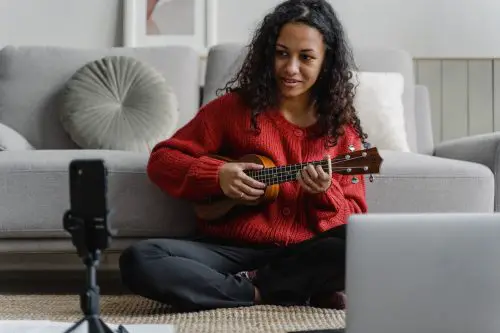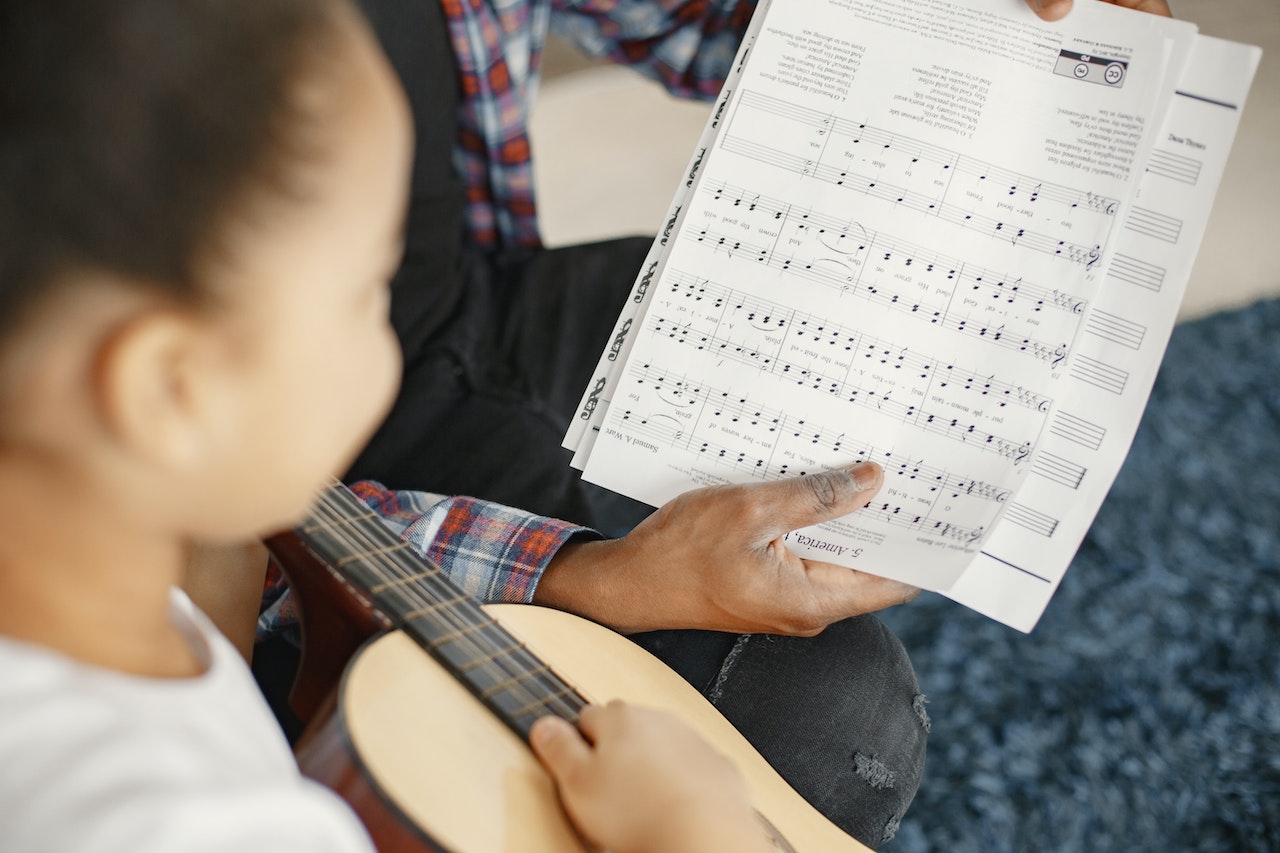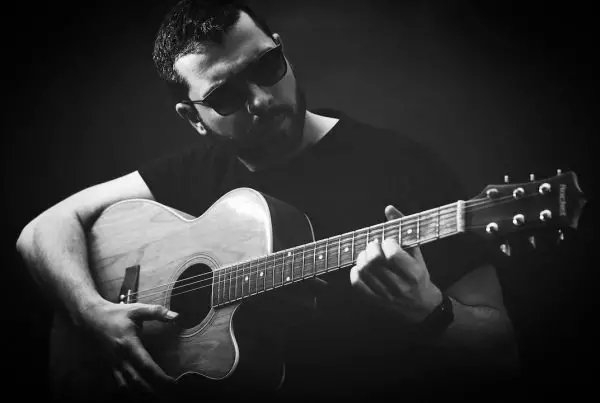Can You Learn Ukulele by Yourself?
You can absolutely learn ukulele by yourself. The main requirement to learn to play is to be willing to devote time and energy to regular practice.
If you spend the time and energy practicing regularly and keep at it and persevere through any learning plateaus, you may just surprise yourself with how quickly you do well at it.
As someone who has been playing stringed instruments for over 5 years, I can confirm that learning any instrument on your own is possible. If you are willing to put in the regular time and effort, you will be surprised at how quickly you can pick up the instrument.
As a matter of fact, it is easier now to teach yourself the ukulele than it has ever been. There are several online courses and YouTube videos where you can find plenty of experienced ukulele players who will be happy to show you various playing techniques.
You can also find forums online, such as Reddit, to ask any questions you may come up with. Please keep in mind that when you are learning the ukulele by yourself, you will do much better and have more fun with it if you are patient with yourself.
Do your best to try to adopt an attitude of having fun while learning and looking for how to improve your playing instead of judging yourself and your current playing ability.
This article will cover seven steps to teach yourself the ukulele quickly. We will also go over approximately how long it takes to learn to play the ukulele, and we will go over whether or not it is better to learn guitar or ukulele first.
We will also review some frequently asked questions, such as, is the ukulele harder to play than the guitar? Can ukulele players play the guitar? And how much you should plan to spend on your first ukulele.
7 Steps to Teach Yourself Ukulele Quickly

There are 7 different ways to teach yourself Ukulele quickly
Before going into each of these steps, please remember that this is a general framework for a plan to start teaching yourself to play the ukulele. Please remember the primary goal of playing the ukulele is to have fun with the process.
You will have more fun and be more likely to put in the time and effort required to improve your skill if you look at your playing as an experiment in what sounds effective or good or bad than judging yourself as a good or bad player.
1. Get a ukulele
Even a low-cost one for approximately fifty dollars is fine as a beginning instrument. The main goal is just to start getting used to the instrument. Once you have purchased the instrument, learn the essential parts of it, such as the bridge, tuning keys, frets, neck, and sound hole.
2. Learn some basic chords and tablature for the ukulele.
Now that you have the ukulele and know the essential parts of the instrument, it’s time to learn some basic chords and notes by reviewing tablature.
When reading tablature, you will see a graphic of the strings and the number for the fret and which finger should be applied where. Please see the link below for some basic chords:
Ukulele basic chords for beginner players • UkuTabs
You can learn just a few basic chords and memorize them. Once you have memorized a few basic chords, play them regularly till you get a ‘feel’ for them. At this point, you should subconsciously know each of the basic chords.
Learning tablature will help you learn new chords and will help you to learn how to play new songs.
3. Rehearse basic scales, strumming patterns, and finger motor skills.
These include strumming patterns, finger dexterity, chords notes, etc. Playing scales will help significantly with this process.
This will also be the stage where you start playing them with a metronome to get basic rhythm structures down. While you can purchase a metronome at any music store, you can easily download one for free on most smartphones.
One basic method to play along with the metronome is to count from one to four, which is as simple as counting from one to four and strumming with each count. When doing so, set the metronome at 60 beats per minute to start out with.
Another basic structure is to count out in eighth notes, which is strumming and counting on one and two and three and four and (strumming eight times).
Each time you count aloud, saying one and two and three and four and. There should be a total of eight counts. Keep the metronome at 60 beats per minute when doing so.
4. Find one or two songs you enjoy and start playing them.
Pick out one or two of your favorite songs and play the chords along with it in rhythm. It is entertaining and rewarding to play your favorite songs.
You will also learn how to keep rhythm, understand chord progression, and develop your ability to know the different sounds of all of the chords. Make sure it is a song you like with some basic simple progressions you enjoy.
The more you like the song, the more you will play it. The more you play it, the more you will improve. Playing and learning some popular songs on the ukulele will help to develop your ear for the right notes and chords and help you to learn to keep rhythm.
5. Improvise with a group
Learn to play with various other players of other instruments to know how to jam with other musicians. Now that you have some experience and have learned and played on your own, it is time to find some other musicians that you can play with or jam with. This is also the stage where you start to freestyle and get creative with your playing.
One easy way to start doing this is to alternately pick each ukulele string instead of strumming them all at once. For example, if you are playing the D chord on the ukulele, you can pluck the fourth string, the first, the second, and the third.
Improvising should be a fun experiment. Try not to think of improvising as the right way or the wrong way to play an instrument, but as a way to be creative and what you think sounds right based on what is being played and how it sounds.
6. Write a song
Basic tenants of coming up with your own types of songs and how to do so, different timing signatures, etc.
Now that you know the basics of the instrument and have some basic timing structures down, you know some basic chords, and you have practiced some improvisation, you can start creating your own songs.
Many people find this to be the most enjoyable part of the process. There is no right or wrong way to write a song. I would suggest thinking of this as an experimental process. If you have created a song that resonates with you, then you did it the right way.
One way to write is to play a few chords and experiment with the order and signatures you are playing them with. Your verse should have one chord progression, and your chorus another chord progressing.
Once you find chords and or notes in a way that you are comfortable playing them for a verse, you can move on to a chorus. There are several ways to do this.
- Verse
- Chorus
- Verse
- Chorus
- Verse
- Chorus
You can also include a bridge in your song writing. A bridge can go between any of the verses and choruses at any point. The bridge should have its own unique chord progression as well.
Here is an example of how to incorporate a bridge into your song (feel free to place the bridge in a different order if you choose to do so):
- Verse
- Chorus
- Verse
- Chorus
- Bridge
- Verse
- Chorus
Once you have your progress down, you can write lyrics to your new song. Your lyrics can be the same for the chorus. The lyrics for each verse are slightly different.
Many musicians will write out lyrics or poems and then sing them over the chord progression for the verses and choruses they have written that they think match well with their lyrics.
Other musicians will first write out the chord progressions and then write lyrics that they think fit in with the chord progressions.
It is ultimately up to you how you write your songs. The most important thing is not to think of it as right or wrong but to think of it as which sounds most effective for what you are trying to accomplish.
7. Reflection
While this is the last step of this process, you can also apply this step at any point in this process while you learn to play the ukulele.
I would recommend playing with a recorder of some sort to make sure you can go back and listen to how your playing has improved on a week-to-week basis.
Not only will you benefit from knowing how and where you are improving, but you will be able to identify where you need to improve more clearly.
For example, if you listen to the recording of your playing and discover that your chords sound great, but you are not playing in rhythm, then you can devote more time to practicing with a metronome.
After devoting more time to playing your songs with the metronome for a couple of weeks, go back to your playing and see how your timing and rhythm have improved.
Keep a learning journal and recordings of how your playing sounds so you can refer back to them and measure your practice. Referring to your recordings and journal will help you identify the aspects of your playing you can improve.
Also Read: 7 Simple Ways To Make Guitar Strings Easier To Press
How Long Does It Take To Learn Ukulele By Yourself?

There is maximum three to six months for learning ukulele by yourself
The average time to learn the ukulele by yourself is about three to six months. The amount of time needed to learn the ukulele can be shorter or longer depending on a few factors, including the amount of time dedicated to practice, how regularly you practice, etc.
Is It Better to Learn Guitar or Ukulele First?

Its up on the instrument you are most passionate or which style of music you love most
Many people will find that it is better to learn the ukulele first simply because of the fewer strings and the less finger and hand pressure required to make notes and chords.
There are some people who will find it better to learn guitar first, since they feel that their hands are too big for the ukulele’s fretboard.
Of course, ‘better’ is open to interpretation. The best option is the instrument you are most passionate about or which style of music you like most.
Also Read: Do You Need To Learn Barre Chords: Alternative For Beginners
FAQs
Q: Is Ukulele Harder Than Guitar?
For most people, the ukulele is easier to play than the guitar. One possible exception is the player’s hand size.
Many people with larger hands may find it easier to play the guitar than the ukulele as they feel that their larger hands can make playing notes and chords on the ukulele’s fretboard a bit more challenging than the guitar due to the smaller size of the ukulele.
Q: Can a Ukulele Player Play Guitar?
A ukulele player can play guitar with a bit of practice. The ukulele player has similar motor skills required to play the guitar, such as strumming, picking, and playing rhythm.
The ukulele player who has not played the guitar will need to learn new chords and tablature but will most likely have an easier time of it than someone who has never played a stringed instrument before.
Q: How Much Should I Spend on My First Ukulele?
A reasonable amount to spend on a ukulele is approximately between 50 dollars to 150 dollars.
You may even be able to find them for a lower amount by purchasing a used one. While there is certainly nothing wrong with spending more on your first ukulele, the most important thing is just to get one so you can start practicing and playing it.
Getting a more expensive instrument will not make you a better player; your best bet is just to get one you can easily afford now and to begin playing it and having fun.
Conclusion
This article covered seven steps to learning to play the ukulele. We also reviewed frequently asked questions such as is the ukulele harder to play than the guitar, can a ukulele player play guitar, and how much money is a reasonable amount to spend on your first ukulele.
Please also remember that when you start learning a new instrument, you will have challenges and stumbling blocks. The best way to improve as quickly as possible is to ensure that you are having fun and enjoying the process. To do so, the best attitude you can take when approaching learning to play the ukulele is to have fun with it.





